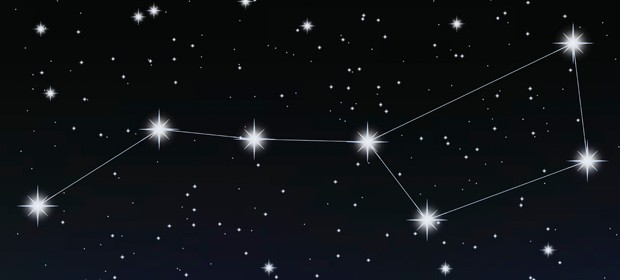The Scientifics Star & Planet Locator is one of the most useful tools in a stargazer’s observing kit and its use has often been referenced in this column. But the sky itself offers a natural star finder—one that’s at its best at this time of the year. It’s none other than the famed Big Dipper! Use your Star & Planet Locator to follow along and see how this is done.
Now here’s an amazing fact: of the 88 officially recognized constellations covering the entire sky, all or part of 66 of them can be seen from mid-northern latitudes. And every one of those 66 can be located using the Big Dipper as a pointer! (Incidentally, the Dipper itself is not a constellation but rather an “asterism”—a distinctive grouping of stars that’s part of a constellation. In its case, Ursa Major.)
As an easy well-known example, follow the two “pointer stars” at the end of the Dipper’s “bowl” northward to the star Polaris located at the north celestial pole of the sky in the constellation Ursa Minor. Going in the opposite direction using the pointers brings us to Regulus in Leo. Next, follow the curve of the Dipper’s “handle” downward in the sky to the bright orange star Arcturus in the kite-shaped constellation Bootes. Continuing that curve southward brings us to the bright blue-white star Spica in Virgo, which looks like a faint but giant “Y” in the sky. Getting the idea?
Going back to the pointer stars, continuing a line through Polaris to the other side of the pole lands us at two distinctive neighboring constellations—W-shaped Cassiopeia and next to it house-shaped Cepheus. Returning to the Dipper’s bowl, extending a line diagonally from its upper left to its lower right star points to the twin Suns Castor and Pollux in Gemini. Going across the two top stars in the bowl westward (right) brings us to Capella in the pentagon-shaped constellation Auriga. Between and south of Gemini and Auriga is the brilliant ruddy star Betelgeuse in the top part of the magnificent winter constellation Orion, now setting in the west. Still visible above the horizon are its three distinctive “belt stars” which point upward to bright orange Aldebaran in Taurus and downward to Sirius in Canis Major—a radiant blue-white diamond and the brightest star in the entire heavens! And oh—that bright star to the upper left (northeast) of Sirius? That’s Procyon in Canis Minor.
These last examples illustrate how starting with the Big Dipper to find a constellation, and then using that one to find another one and another eventually allows you to work your way around the entire sky from season to season. (You can use your Locator to see this without having to wait for the seasons to unroll!) And they don’t have to be big bright constellations either. Here are two examples. Look again at Bootes: just to its left (east) is a crown-shaped semicircle called Corona Borealis. And beneath Virgo is a distinctive sail-shaped group called Corvus. Enjoy exploring with the sky’s super-finder!
— James Mullaney
Former assistant editor at Sky & Telescope magazine & author of nine books on stargazing. His latest, Celebrating the Universe!, is available from HayHouse.com.


